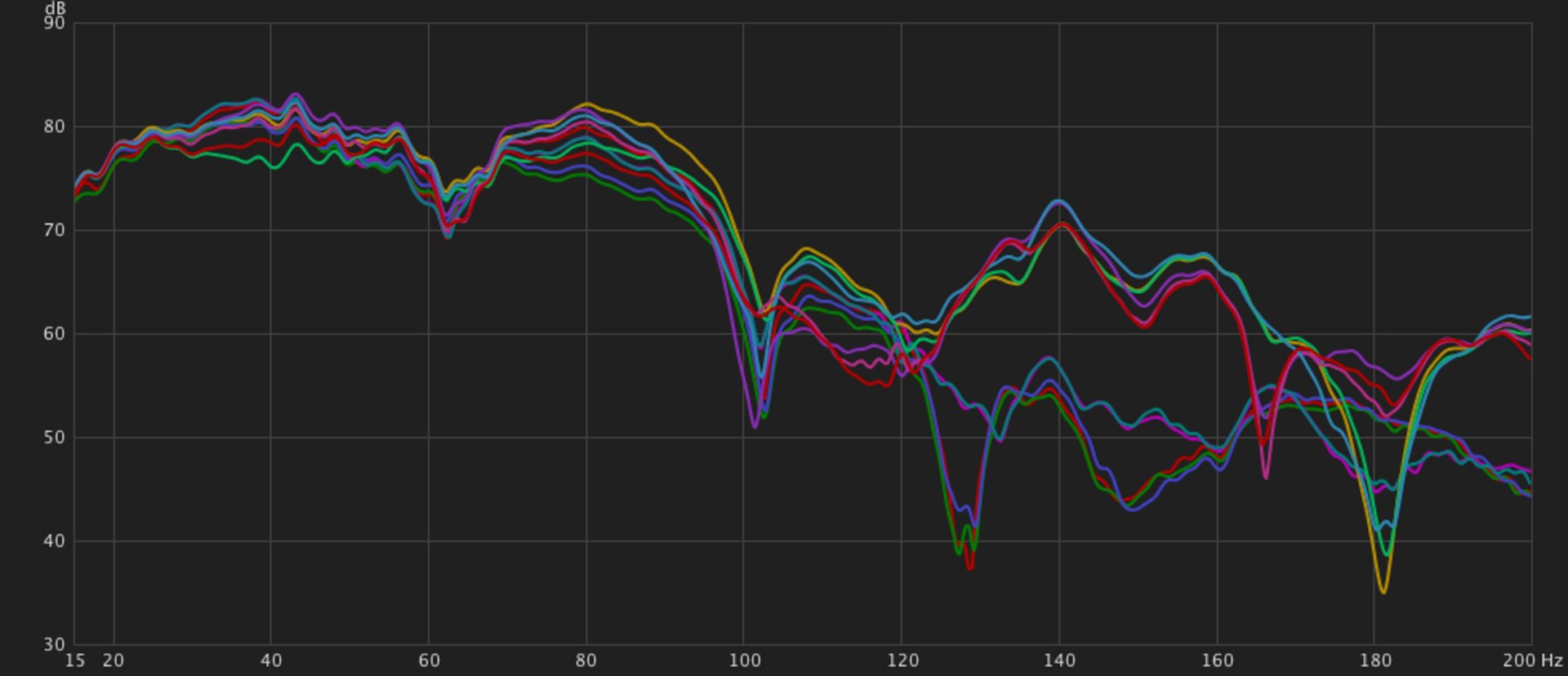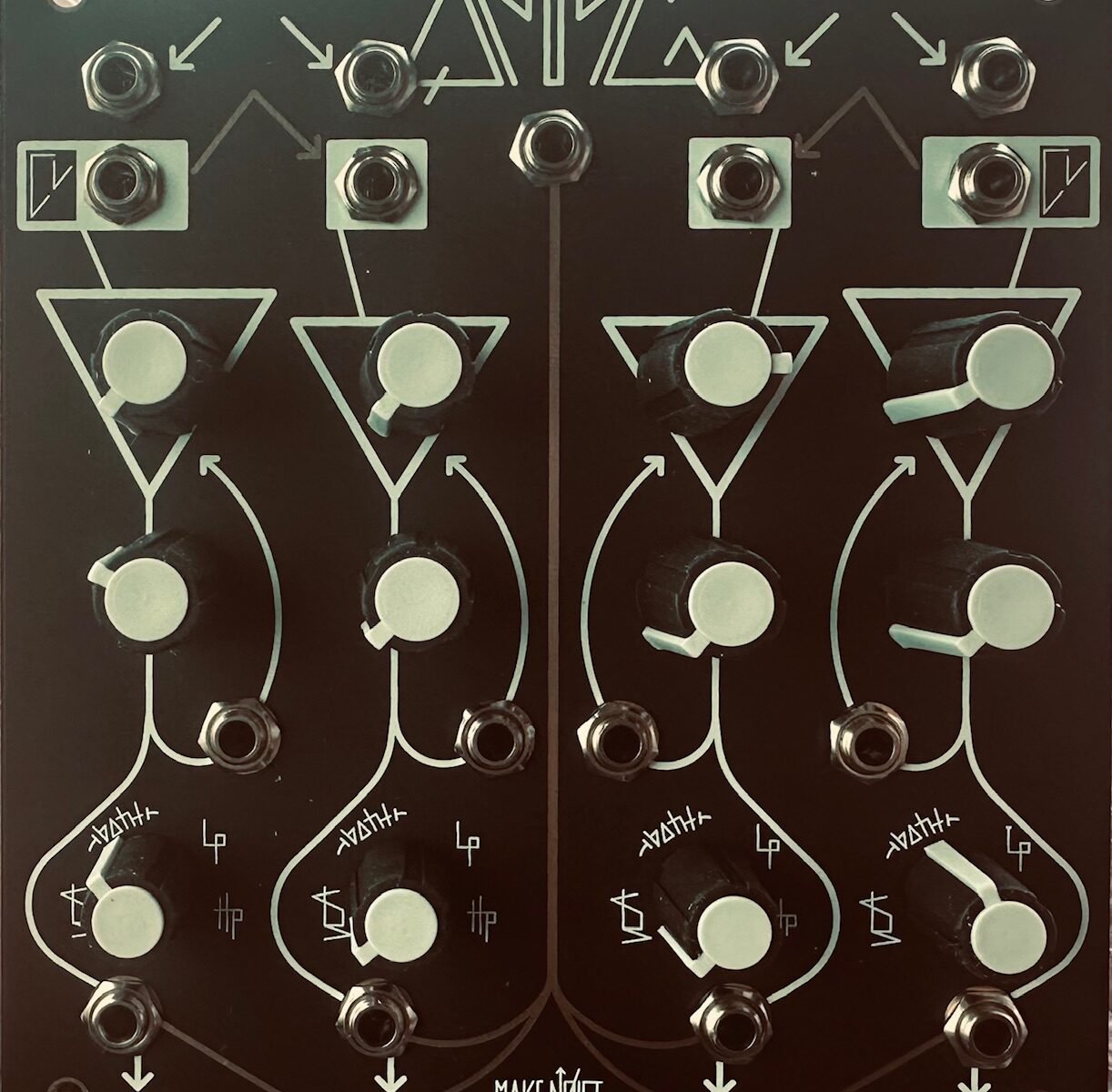Eurorack can be a funny space. We have thousands of modules available to us to do any number of amazing things with sound. Sometimes these modules are bullshit copies of a worthy predecessor, while others are completely unique and have a cult-like following that stands the test of time and the ever-increasing number of new modules released almost daily.
And then there’s a very small handful of modules that attain legendary status in the community for being something much greater than the sum of its transistors, capacitors, and resistors. Those modules that transcend its intended purpose and becomes an instrument unto itself. The Make Noise Maths is a meme at this point, being the solution for so many Eurorack conundrums. If you need to perform some difficult (or easy) control scheme, chances are “Maths does that.” The Modcan Quad LFO and Rabid Elephant Natural Gate are other examples. But arguably no other module in all of Eurorack approaches the iconic status of the Make Noise QMMG.
Originally billed as a spin on the Buchla 292c, the QMMG (Quad Multi Mode Gate) is a quad set of VCAs, low pass gates, resonant low pass filters, and resonant high pass filters, with clever normalizations and mixing schemes that make it ideal for controlling and mixing both audio and CV. On the surface QMMG isn’t anything special. It looks simple enough, like most quad filters out there. But under the hood is some circuitry magic that does “something” to the sound that elevates QMMG to its current pedestal atop almost everyone’s Eurorack wishlist. A quick peek at Reverb will show a seldomly sold module that goes for several times more than its original retail cost, with buyers eager to plunk down thousands, and happy to have the chance to own one of these fabled modules, even if only for a short time.
Although this story is largely accurate, I’d be remiss to omit one simple fact: although the QMMG has been around in one form or another since 2008, so few of them have been made that scarcity plays a large role in its status, as well as almost all of these modules. It’s no coincidence that so many legendary-status modules fetch obscene prices on the secondary market. There just aren’t very many of them. They’re unicorns. Unicorns to the point that their scarcity adds to the legend. Some of these shortages are the result of these modules being made by hand in small workshops by as few as one person. Costs in a small operation are already very high. Scaling production simply isn’t an option for many.1 Some are the result of a company having stopped making them long ago. Others, like QMMG, are the result of the parts being both difficult to source, as well as being expensive when you can find them. Add in a serious variability differential between nominally the same exact parts, and it’s just plain hard to build them in any sort of real quantity. So far as anyone can tell, far fewer than 1000 QMMGs have been made since its original release in 2008. Originals are scarce and fetch very high prices. There was a 10th anniversary run in 2018 which resulted in perhaps 100 units, but nothing since. The only place to get one is on the secondary market at collectors prices.
Until now.
In mid-August Make Noise announced that although QMMG is a difficult module to build on any sort of scale, they had spent the better part of the last several years sourcing and testing as many parts as they could find in order to try and fill the gap. That QMMG would make a return, even if only in another limited release. It would go on sale in stores worldwide on September 9, 2024, with a popup sale event on September 7, 2024 at the Make Noise headquarters in Asheville, NC.
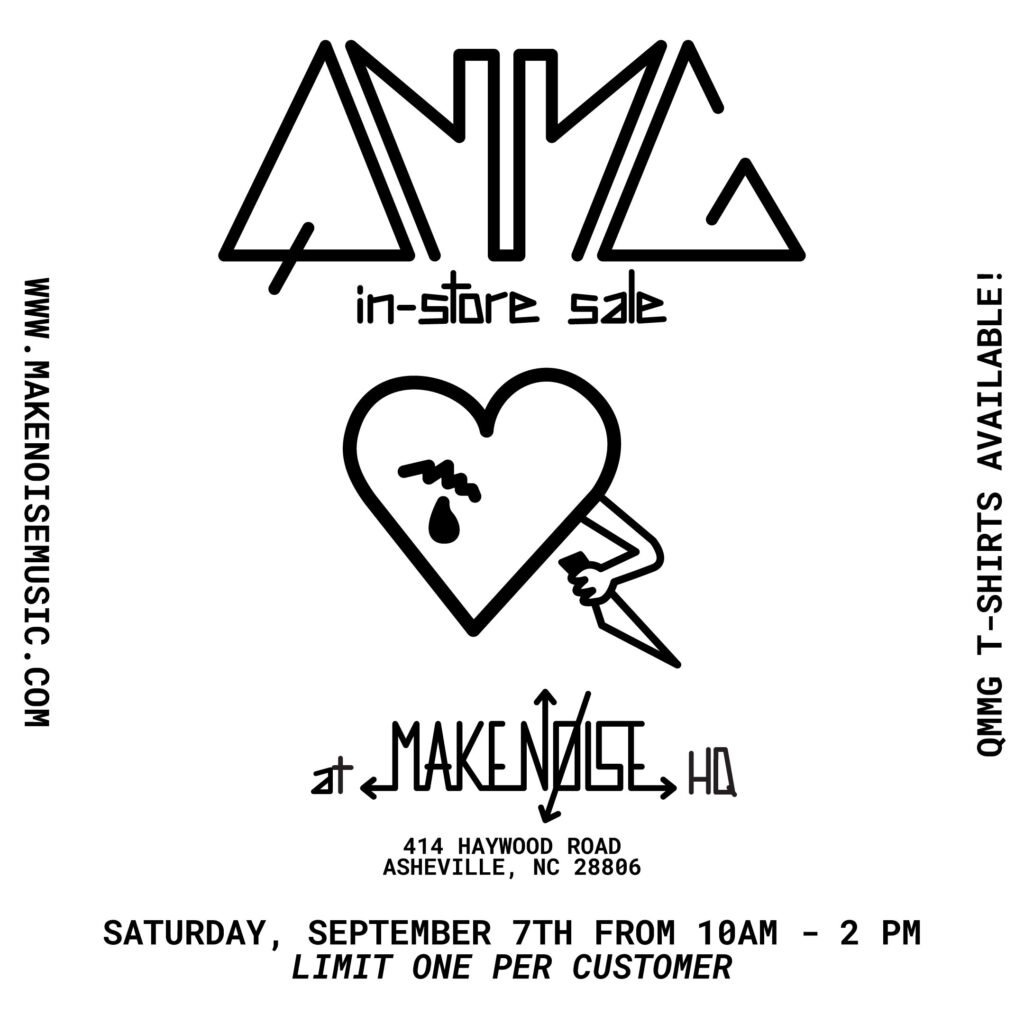
Make Noise is a staple in the Eurorack community, and has been for a very long time. They helped usher in the modern era of Eurorack with modules like Maths, QMMG, and Rene, and have been stewards of modular music, making hundreds of demonstration and tutorial videos. Walker Farrell, Make Noise’s YouTube video host, is known throughout the modular world as an ambassador of not only Make Noise as a company, but the entire genre of modular music. Very few Eurorack synths don’t have at least one Make Noise module. Without Make Noise, Eurorack would not be what it is today. Yet despite their enormous success, Make Noise understands that this community is small, and still seeks to interact directly with their customers. Not only do they occasionally open up their HQ in Asheville for special releases like QMMG, but they often use that opportunity to help proselytize Eurorack and modular synthesis as a whole in a way that is more than than just promoting their brand and bottom line. Today that sense of community building came in the form of a free modular performance at a local brewery and beer garden, Cellarest, where about 100 Eurorack geeks got to hang out with people we’ve never met, and never would have met without the QMMG event, to enjoy something special outside of being one of the few who were fortunate enough to purchase one of the most revered modules of all time at retail pricing, straight from Tony Rolando himself.
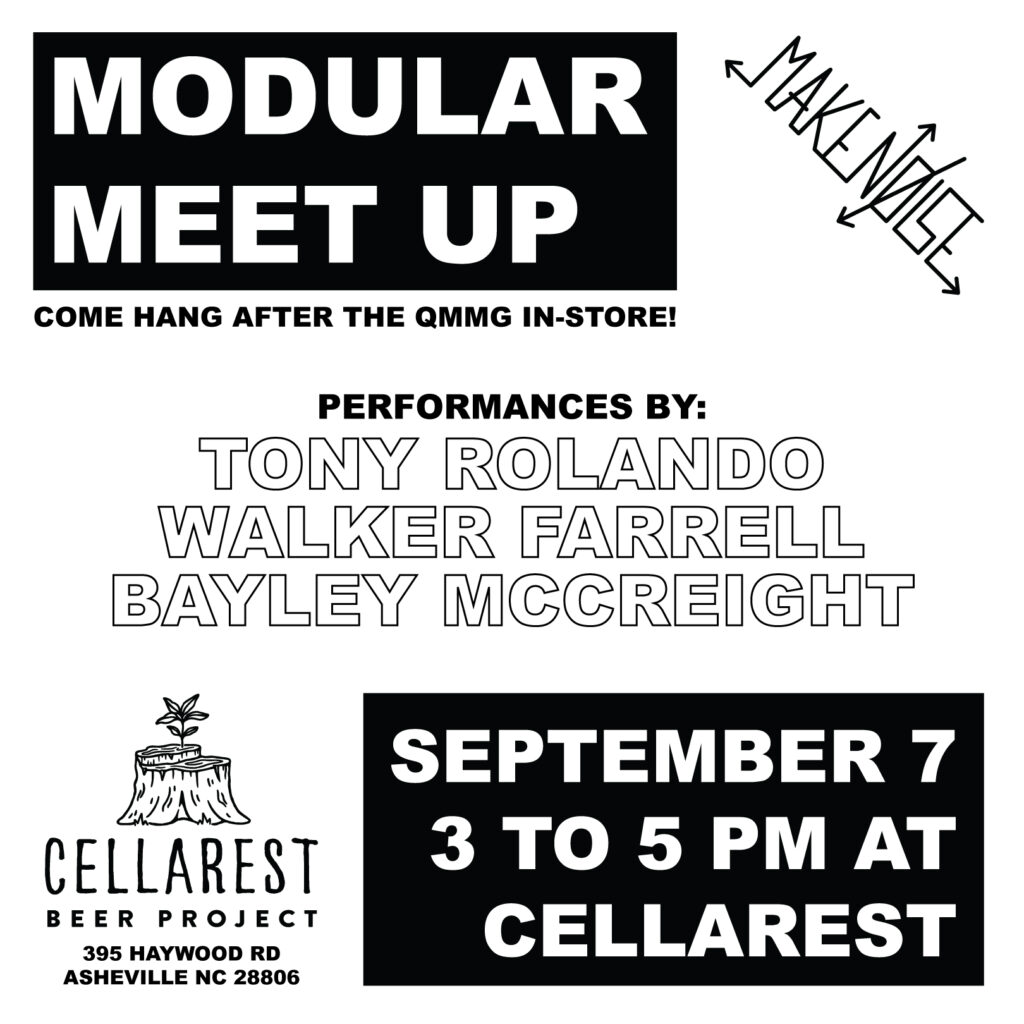
Being that this was the first time I’ve been to a modular performance, it wasn’t at all what I expected. When I sat down with my first Crescent 9 seltzer, I was expecting boots and pants, or some approximation, but instead got three freeform modular improvisations by three experienced modular performers, which was a rare treat. I hadn’t anticipated that, like me, their creative interests would lie in something far less structured and free flowing. The patches were clearly premade, but the performances spontaneous and raw. Although I’m not sure I’d play their performed pieces on repeat, it was an eye opening peek into a live creative process, and I’m glad I was able to share that space and enjoy that process with them.
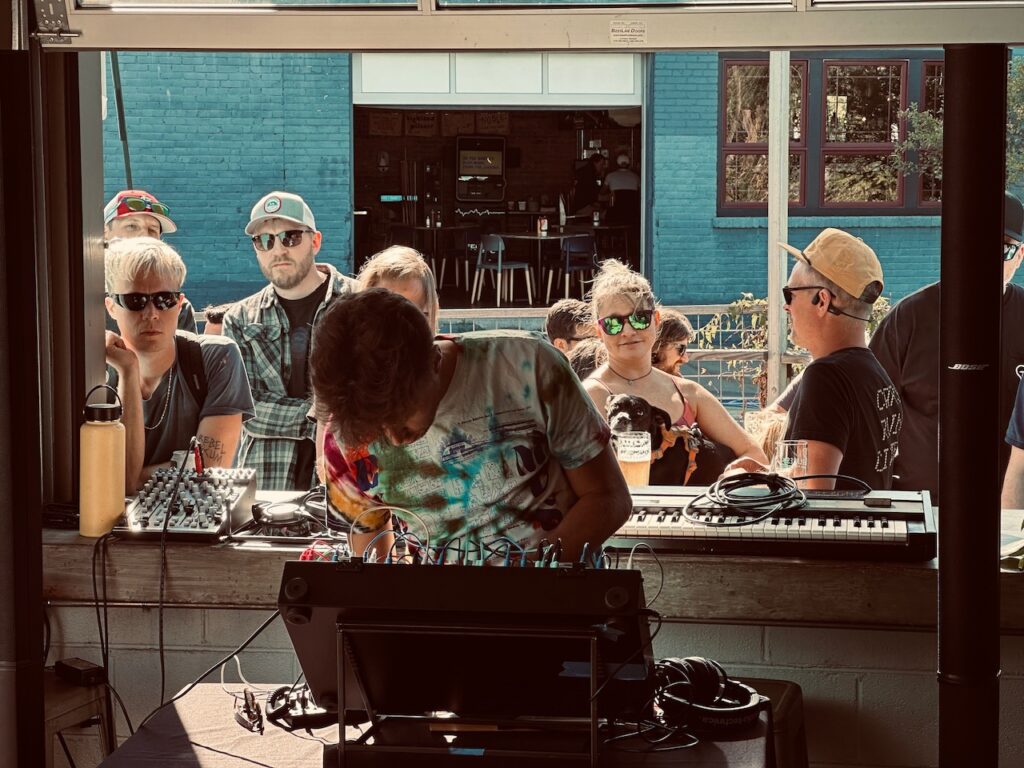
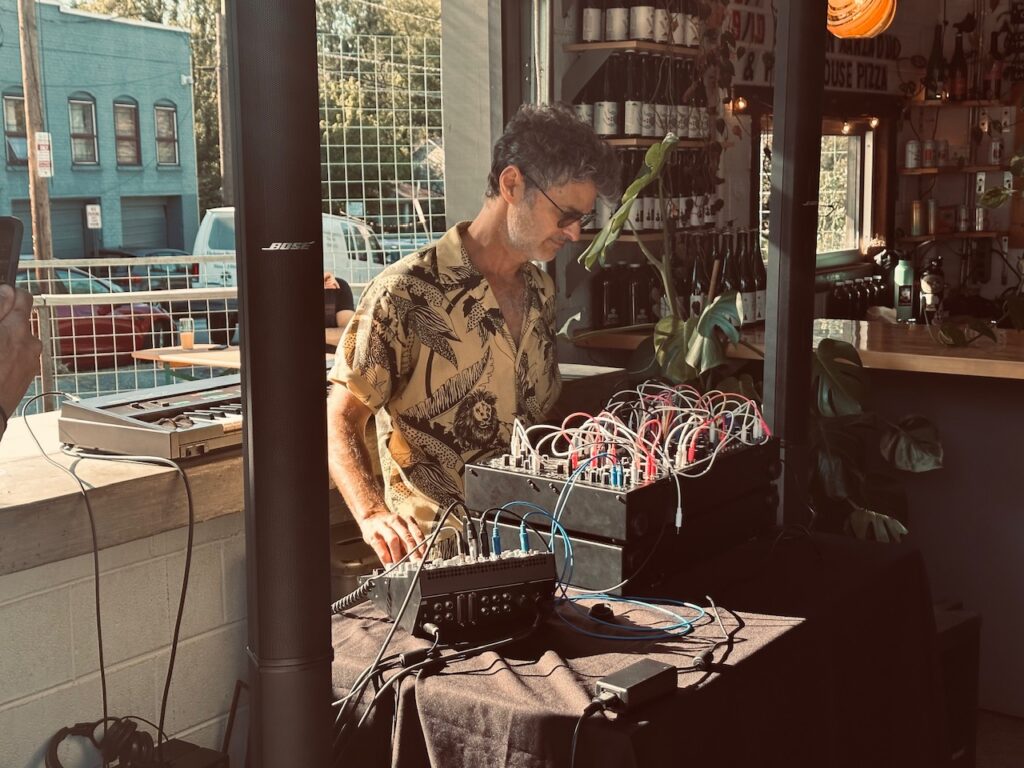
I feel very fortunate that I was able to attend the pop-up sale event and snag a revered and highly sought after module that’s been high on my want list since I first got into modular synths. When I first looked into getting a QMMG, I was resigned to never having one. I knew that no matter how good, I was never going to buy one on the secondary market at collectors prices, and with Make Noise, along with much of the rest of the modular universe, beginning to move away from vactrols because of asinine EU regulations, I didn’t anticipate they’d make another run. Yet here we are, and with ideal circumstances to finally have a good chance to snag from straight from the source. I’m very privileged to be in the position I am. And, perhaps even better, I was able to meet new people, including a couple of very cool guys who were in line behind me, and experience my first modular performance. It was a very good day, and I hope Make Noise has many more release events like this in the future.
- Even though both Mannequins and Rabid Elephant have found new ways of scaling production beyond a few dozen per cycle, it hasn’t been until this year, almost a decade after they were originally released. ↩︎
